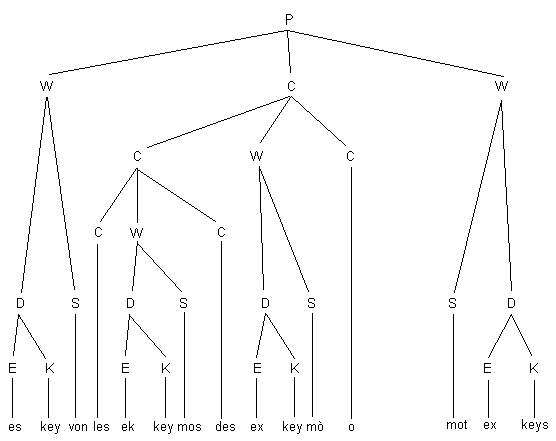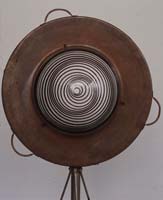|
Now, we shall try to clarify the meaning of the prime words. Following the suggestion of Calvesi, I think that they are primary vocal emissions, like the word "Dada," or like the first syllabic articulations of a child, like "mama"or "papa," when they haven't yet a precise semantic reference (to abstract words, says Duchamp), i.e. when they are still only pure combinations of elementary phonemes (135). So I look at the prime word and the abstract word as synonyms. Thus, we can see some first examples of this new language, I think, in Duchamp's nonsensical wordplays based on cascade alliterations. The most famous being:
Gould analyzed this in the above-mentioned essay (which for me has been a source of both inspiration and pleasure). It is a question of rearrangement of some principal syllabic groups, that in this context we can consider as phonemes. The fact that from this combination of syllables into words a non-sense arises corresponds exactly to the programmatic devaluation of the semantic aspect relative to the syntactic one. Here syllables have a value exclusively because of their combinatory grammar, but they haven't any overall semantic reference; there isn't any pedagogical a sentence construction, any figures of speech (read, as I believe: idiomatic form). The grammatical rules for the syllabic rearrangement are abridged in the following simple (recursive) grammar that can generate Duchamp's wordplay (and infinitely other non-senses, with the same structure, in a pure French grammelot): The starting symbol
is P. The symbol | stands for "or". P —> W C W C —> C W C | les | des | o (notice that this rule is recursive) W —> D S | S D D —> E K E —> es | ek | ex S —> von | mos | mò | mot K —> key | keys Fig. 29 shows the derivation of the "Duchampian"wordplay.
Gould correctly underlines that the above analyzed wordplay is written by Duchamp on the Rotary Demisphere (1925) (Fig. 30), an optical device which, when rotating, produces the appearance of an outwardly cascading spiral. This meaningful association is very important because it shows that, in Duchamp's intentions, in this play there is a potentially unfinished self-production. Using the grammar proposed above, it is easy to verify this property, if one accepts not only non-sense sentences, but also non-sense words. (Remember that the present grammar generates sentences in a pure French grammelot.) >>Next
Fig.
30
page 1 2 3 4 5 6 7 8 9 10 11 12 13 14 15 |














